Water Contamination: A Growing Epidemic: Difference between revisions
No edit summary |
No edit summary |
||
| (90 intermediate revisions by the same user not shown) | |||
| Line 1: | Line 1: | ||
{{Curated}} | {{Curated}} | ||
==Introduction== | ==Introduction== | ||
It has been theorized that life | It has been theorized that life on earth began in water, and it is fact that without water, no form of life could survive. Around the world, lack of potable water has grown rampant, ironically, since the earth is thought to be 71% water (1). As a race, we humans are struggling to provide potable water; this can be seen here in the United States with the severe droughts in California which are highly debated in politics regarding the consumption and conservation of available potable water, and even more so world wide such as with the astounding contamination of water in India caused nation wide by a lack of sewage treatment infrastructure, hindered further by negative stigmatism associated with bathrooms, causing millions of yearly deaths via water-borne illnesses. India, therefore, is exemplary when taking into account the paramount importance of addressing the issue of potable water. Figure 1 shows the state of contamination almost all of India's water supplies face. [[Image:15-Yamuna-pollution-IndiaInk-superJumbo.jpg|thumb|600px|center|Fig. 1. The longest and second largest tributary of India's sacred Ganges river, the Yamuna is a quintessential example of the high level of contamination in large bodies of water by untreated sewage in [http://india.blogs.nytimes.com/2013/03/15/government-pledges-to-clean-up-yamuna-river-again/ India.].]] | ||
[[Image:15-Yamuna-pollution-IndiaInk-superJumbo.jpg|thumb|600px| | |||
<br>By Santiago Acero<br> | |||
==Contaminated Water== | |||
[[Image:Screen Shot 2015-11-10 at 12.07.05 PM.png|thumb|250px|left|Fig 3. A diagram showing the exploitation of ground water in [http://www.livemint.com/Opinion/v4nXpXNxSJtxQNlEbvtJFL/Indias-groundwater-crisis.html/ India.].]] | |||
Ground Water | Ground Water | ||
It is estimated that cities in India produce around 40,000 million daily liters of sewage; alarmingly, only about 20% of this waste is treated (2,3). Excreta Does Matter (2013) a study by the Centre for Science and Environment (CSE) says that "[t]he untreated waste dumped into rivers seeps into groundwater, thereby creating a ticking health bomb in India," which is overly problematic because the same study reports that 48% of India’s populous lives off groundwater. Groundwater has become a main source of water for a large percentage of Indians because of its ease of access, lack of regulations, and its preferred reliability over stagnant surface water ( | [[Image:Screen Shot 2015-12-14 at 10.23.20 AM.png|thumb|450px|right| Fig 2.Sewage generation compared to the capacity of its treatment in [http://www.ais.unwater.org/ais/pluginfile.php/356/mod_page/content/111/CountryReport_India.pdf/ India.].]] | ||
It is estimated that cities in India produce around 40,000 million daily liters of household biological sewage; alarmingly, only about 20% of this waste is treated (2,3). Figure 2 provides a visual representation of sewage production and treatment capacity. Excreta Does Matter (2013) a study by the Centre for Science and Environment (CSE) says that "[t]he untreated waste dumped into rivers seeps into groundwater, thereby creating a ticking health bomb in India," which is overly problematic because the same study reports that 48% of India’s populous lives off groundwater. Groundwater has become a main source of water for a large percentage of Indians because of its ease of access, lack of regulations, and its preferred reliability over stagnant surface water (4). | |||
Another problem associated with tapping into this resource involves India’s large, and growing population. In the past four decades, India’s population has doubled to 1.2 billion and over 30 million water wells and pumps have been built. With over 600 million people in India living off of groundwater, the resource is becoming scarce and harder for farmers and others to acquire. Many areas are beginning to become increasingly stressed as seen in figure on the left. Normally, groundwater is obtained by tapping 10 meters into the ground. However, with the immense demand for groundwater, farmers and others are being forced to tap 60 meters into the ground. Past 10 meters, they must utilize deep-water equipment, which is a costly and arduous process. The majority of this water is in demand for irrigation. As India’s water sources become polluted, the farmers have been a group to particularly struggle. Along with a lack of accessible groundwater, animals that normally inhabited the marsh lands surrounding the rivers, are leaving those areas due to the mass pollution of the rivers and coming to farmers’ fields, destroying their crops, an Indian farmer told the New York Times in a piece released in 2013. It is evident the impact that water contamination is having on groundwater in India, which is the main source of water to almost half the country. But where does the pollution come from? | |||
==Sewage Complications== | ==Sewage Complications== | ||
In India, 80% of sewage is disposed directly into the country’s rivers, reported the CSE in an early study in 2013. Apart from sewage, cremated bodies are also disposed of in these rivers, as many are seen as holy symbols in the Hindu religion. The large amount of untreated waste is attributed to the lack of functional treatment plants in India as a whole. The World Health Organization reported that of India’s 3,119 towns and cities, 6.7% have partial sewage treatment, while only 0.25% have full sewage treatment (7). The problem not only lies in the fact that there are not enough facilities to treat sewage, but also in the fact that existing ones are primarily useless due to their lack of functionality by construction and upkeep. As well, a lack of workforce coupled with minimal management and lacking constant electricity, renders these treatment plants helpless. In India, there are more temples than toilets. Left without any sort of latrine, many are forced into open defecation, contaminating surface water and resulting in critical health issues due to the lack of hygiene associated with these areas where open defecation is prominent. When people defecate in open fields, their feces are almost immediately surrounded with flies, which can then become carriers of feces spreading disease to food and water. The feces in open fields can also make its way into streams and runoffs, further contaminating nutrition sources (13). Interestingly, studies have shown that even when toilets are available, people in rural India will still practice open defecation, seemingly adapting a cultural and behavioral aspect. The contaminated water that remains is used for everyday washing, bathing, and drinking. The consumption of this water is in many cases fatal. Population Resource Center found in a study in 2004 that contaminated water and food are the cause of 2.2 million deaths of children and infants, almost half happening in India in children under the age of 5. Children are the most vulnerable when it comes to the waterborne illnesses found in contaminated water. | |||
[[Image:Screen Shot 2015-11-10 at 11.59.50 AM.png|thumb|450px|right| Fig 4. A graph showing how water usage is distributed in [http://www.ais.unwater.org/ais/pluginfile.php/356/mod_page/content/111/CountryReport_India.pdf/ India.].]] | |||
In India, 80% of sewage is disposed directly into the country’s rivers, reported the CSE in an early study in 2013. Apart from sewage, cremated bodies are also disposed of in these rivers, as many are seen as holy symbols in the Hindu religion. The large amount of untreated waste is attributed to the lack of functional treatment plants in India as a whole. The World Health Organization reported that of India’s 3,119 towns and cities, 6.7% have partial sewage treatment, while only 0.25% have full sewage treatment (7). The problem not only lies in the fact that there are not enough facilities to treat sewage, but also in the fact that existing ones are primarily useless due to their lack of functionality by construction and upkeep. As well, a lack of workforce coupled with minimal management and lacking constant electricity, renders these treatment plants helpless (3). | |||
In India, there are more temples than toilets (17). Left without any sort of latrine, many are forced into open defecation, contaminating surface water and resulting in critical health issues due to the lack of hygiene associated with these areas where open defecation is prominent. When people defecate in open fields, their feces are almost immediately surrounded with flies, which can then become carriers of feces spreading disease to food and water. The feces in open fields can also make its way into streams and runoffs, further contaminating nutrition sources (13). Interestingly, studies have shown that even when toilets are available, people in rural India will still practice open defecation, seemingly adapting a cultural and behavioral aspect. The contaminated water that remains is used for everyday washing, bathing, and drinking. The consumption of this water is in many cases fatal. Population Resource Center found in a study in 2004 that contaminated water and food are the cause of 2.2 million deaths of children and infants, almost half happening in India in children under the age of 5. Children are the most vulnerable when it comes to the waterborne illnesses found in contaminated water. | |||
<br> | <br> | ||
==Waterborne Illness== | ==Waterborne Illness== | ||
[[Image:Screen Shot 2015-11-16 at 8.05.13 PM.png|thumb|520px|right|Fig 5. Antibiotic susceptibility, in percentages, of different <i>Klebsiella</i> pneumoniae [http://www.ipcbee.com/vol9/25-B060.pdf/ isolates.].]] | |||
The majority of deaths associated with contaminated water and poor hygiene world wide, are those diseases that cause severe diarrhea. These include diseases such as cholera and dysentery. World wide, diarrhea is the number two killer of children under the age of five, killing 1 in 9. Diarrhea causes dehydration due to the extreme loss of fluids in the body, which in turn can cause kidney failure and other harmful side effects. In children under five, being dehydrated for two days can be fatal, where in adults, it is the regular duration of a normal, non-threatening diarrheal episode. The diseases are so easily spread in children because of a lack of hygienic education and their adventurous nature, all in an environment where sewage goes directly into drinking water sources and open defecation is nation wide. | |||
Some of the most worrisome bacteria in India’s contaminated waters are <i>Klebsiella</i>, responsible for a myriad of diseases such as rhinoscleroma, atrophic rhinitis, sinusitis, otitis, appendicitis, enteritis, and cholerysititis, and <i>Acinetobacter</i> responsible for diseases such as bacteremia, pneumonia, meningitis, wound infections, endocardtitis, and otitis media. Like many bacteria, <i>Klebsiella</i> and <i>Acinetobacter</i> have become growingly difficult to treat due to their adaptive resistance to antibiotics. Like many diseases in developing nations, when treatment cannot be fully overseen, bacteria may be exposed to antibiotics for a period of time that allows the bacteria to adapt to the antibiotics without eradication from patient, with treatments not being carried to term. The reason for incomplete treatment ranges from the cost of these drugs to patients seeing decrease in symptoms and consequentially stopping their treatment. This has led to the evolution of many nosocomial strains of these bacteria leading to high rates of mortality and morbidity in India as well as in the United States (11). Treatment will also vary by patient and by what type of strain is identified. In patients that are allergic to penicillins, aztreonam and quinolones have been effective and when treating rhinoscleroma, rifampin has proved useful. Though more regularly, <i>Klebsiella</i> infections are treated with monotherapy of cephalosporins and sometimes in concert with aminoglycosides (14). | |||
[[Image:Screen Shot 2015-11-16 at 8.35.45 PM.png|thumb|380px|left|Fig 6.Biolog phenotype microarray of <i>Klebsiella</i> strain with an over expressed rarA gene in grey, and a control strain in the presence of (a) clioquinol at 58ug/ml, (b). norfloxacin at 0.6ug/ml, (c). 8-hydroxyquionoline at 733 ug/ml, and (d). chloroxine at 28 ug/ml over a 48 hour period. Array was performed in a [http://www.ncbi.nlm.nih.gov/pmc/articles/PMC3623357/pdf/zac1603.pdf/ 96-wellplate.].]] | |||
<br><b>MDR <i>Klebsiella</i> operon</b> | |||
Though antibiotics have saved millions of lives world wide, their misuse has proven fatal: creating bacteria resistant to any tool available in the medical field. Dr. Vinod Paul, the head of pediatrics at the All India Institute of Medical Sciences, explains that, “with antibiotic pressure, then these organisms [<i>Klebsiella</i> and <i>Acinetobacter</i>] become resistant” (17). Figure 5 shows a wide range of nosocomial <i>Klebsiella</i> strains susceptibility to different antibiotics. On a molecular level, it has been found that there is a multidrug resistance operon in <i>Klebsiella</i> similar to the MarA, SoxS, Rob, and RamA that contribute to antibiotic resistance in bacteria like <i>Escherichia coli</i> and <i>Salmonella</i>. The overexpression of this RarA protein in <i>Klebsiella</i> has been found to change the expression of over 60 genes, much like MarA, SoxS, Rob, and RamA. Though these proteins and their respective operons are well understood in bacteria like <i>E.coli</i>, the rar operon in <i>Klebsiella</i> is not. The most important changes in expression known to contribute to multiantibiotic resistance in <i>Klebsiella</i> are the downregulations of OmpF porins, an outer membrane porin that allows diffusion of small polar molecules, and the upregulation of AcrAB and OqxAB efflux pumps that allow the bacteria to quickly get rid of any antibiotics that may pass through their membranes. In addition to change in expression of genes associated with antibiotic resistance, genes associated with energy production along with other energy intensive genes were downregulated. Interestingly, overexpression of the rarA gene showed increased anitbiotic resistance to different types of antibiotics. This is where bacteria like <i>Klebsiella</i> become dangerous: when already harmful bacteria have the ability to mutate and acquire resistance to different types of antibiotics, they become fatal. The overexpression of the rarA gene in <i>Klebsiella</i>, for example, resulted in increased resistance to multiple types of antibiotics including disinfectants, beta-lactams, protein sysnthesis inhibitors, cytokineis inhibitors, antifungal/antiprotozoals and others as seen in Figure 6. Further research into the genes who’s expressions are affected by the over expression of RarA have great clinical implication since isolates of <i>Klebsiella</i> have been associated with higher transcription of RarA (12). | |||
==Population== | |||
[[Image:Screen Shot 2015-12-06 at 3.07.29 PM.png|thumb|200px|right| Fig 7. Image showing India's dense [http://www.all-about-india.com/Population-of-India.html/ population].]] | |||
India is the second most populated country in the world, making up about 17% of the earth's population. As the population continues to escalate dramatically, resources continue to decline in the same fashion, not only in quantity but in quality as well. Over 350 million live on less than a dollar per day (15). That is 40 million more than the entire United States population. Contraception is expensive and taboo to many. This rampant growth only furthers the disease pool in India, as more and more people are crowded into increasingly smaller spaces, where sewage is little to none. This facilitates the spread of diseases acquired from contaminated water. The rapid growth in population also further escalates the countries constant struggle with poverty. Resources are already not sufficient for the large population at hand, but when an exponential amount of people are being born, there is more to care for and less financial support to do so. Local and national constitutions struggle to find sufficient funding, though there has been a radical increase in awareness and allocation of funds in the 2000’s. In the 1980’s the coverage of rural sanitation was at 1%, growing to 21% in 2008 (16). Awareness and education in India are large contributors to the problem behind the water contamination endemic. India’s literacy rate is around 74%, this seems good, but when taking into consideration the population, that means that there around 300 million illiterates in India. Education about hygiene would be hard enough in a country with 1.3 billion, but when a large portion of those is illiterate, it becomes harder to convey the message. It is hard to penetrate social and cultural taboos, especially in a country where there are 19 major languages with a 100 different dialects and many cannot read or write (15). | |||
==What is Being Done== | ==What is Being Done== | ||
[[Image:Drinkable book.jpg|thumb|520px|right| Fig 8. Picture of the Drinkable book, whose pages are comprised of two water filters with hygiene tips written on them. The individual filters fit into the white case, where the water is pour into. Each filter can provide one person with enough clean water for 30 [https://drinkablebook.tilt.com/the-drinkable-book/ days].]] [[Image:Protestors.jpg|thumb|520px|right| Fig 9. Protestors supporting the “Save Yamuna” river campaign, gather in the national [http://india.blogs.nytimes.com/2013/03/15/government-pledges-to-clean-up-yamuna-river-again/?_r=0/ capital].]] | |||
There have been many campaigns, local and national to improve the sanitation in India and stop the wide spread mortality associated with it. From government movements such as new Prime Minister Narendra Modi’s “Clean India” plan, which wants to make New Dheli a clean, trash free city. For example, Modi has worked with large companies to build and supply more people with toilets. Last year, Modi’s government was able to produce over 5.6 million toilets, though many went unused. Locally, many Indian’s have take to the streets to protest about the pollution in their holy rivers and lack of sewage in their cities. The Yamuna River is one of the most protested rivers due to its holy status and its insurmountable levels of contamination. The government has pledged time and time again that the river will be cleaned, providing it with x amount of clean water and adding sewage treatment systems; though to this point no true progress has been made, under Modi’s rule many are hopeful. | |||
As well, there have been organizations world wide attempting to come up with solutions to India’s water crisis. Researchers from Carnegie Mellon have partnered up with a company to make the first Drinkable Book. A truly remarkable innovation, the drinkable book is composed of pages which each break into two filters, that can provide someone with clean water for 30 days. Printed on the pages are tips on sanitation that we take for granted and might even break social stigmas in India. The book aims to not only provide people with clean water but also educate them at the same time. Perhaps the most problematic aspect of India’s crisis are the cultural and behavioral stigmas associated with many of the “problems” and “solutions”. Sadly, many of the judgment calls all over India are made by the men in the households, who do not seen sanitation as overtly troublesome topic (18). | |||
In the fight to provide toilets for households in India, many have gone unused. The men in the family fear that the large concentration of fecal matter so close to their homes is not as healthy as relieving themselves in open fields with breezes. As well, they fear the pits, where the fecal matter would go, would fill up quickly and they would have to be the ones to clean out these pits of feces. The social status associated with latrine cleaners is not a good one. The fear of descend in social status also prevents families from moving forward with the concept of toilets. However, it is true that many women have adapted the use by means of governmental propagandas encouraging families to not allow the women in their families to marry into a village that does not utilize toilets, because it is not safe for women to defecate in open fields, especially late at night in places where public lighting is close to non-existent. Because of this, the image of toilets has become attractive, but only for women (19). One approach officials have taken is to pay people to use public toilets. Specifically, officials are rewarding good behavior in children, giving them a rupee every time they use the public restrooms and sometimes-even chocolates. The problem is that many of these people have grown up in small, sheltered villages and taking an action as public as defecation, to them, and making it as private as we know it to be, is an utter culture shock. Many believe there are witches in the public bathrooms or that their children will be kidnapped in them (13). Lack of trust in innovation will always be a struggle in developing countries. | |||
==Conclusion== | ==Conclusion== | ||
The advancements made thus far admirable, but far from sufficient. It should be nationwide concern just as much as an international one. Allowing hundreds of millions of people to go without potable water is inhumane, as is allowing the corruptive pollution of our planets bodies of water. It is clear that awareness is being raised, and more people are starting to listen and join the cause. Potable water is a worldwide issue. It may seem hard to relate to the hardships of India’s water crisis, but the struggle is taking place, in a different form, here in the United States. Though the quality of water is incomparable, the quantity is not. California has such severe droughts that state government officials have implemented mandates conserving the amount of water used. The entire state of California is under some sort of drought distress, some areas more than others. It is important to recognize the problems that plague us as a race see no geographical boundary. Research inches closer to answers and solutions, but it is only through awareness and education that this is possible. | |||
The advancements made thus far are admirable, but far from sufficient. It should be a nationwide concern just as much as an international one. Allowing hundreds of millions of people to go without potable water is inhumane, as is allowing the corruptive pollution of our planets bodies of water. It is clear that awareness is being raised, and more people are starting to listen and join the cause. Potable water is a worldwide issue. It may seem hard to relate to the hardships of India’s water crisis, but the struggle is taking place, in a different form, here in the United States. Though the quality of water is incomparable, the quantity is not. California has such severe droughts that state government officials have implemented mandates conserving the amount of water used. The entire state of California is under some sort of drought distress, some areas more than others. Thankfully, the droughts in California have not escalated to fatal extents. However, seeing a domestic struggle with potable water availability gives as a small, but significant glimpse into the shameful conditions in countries such as India. It is important to recognize the problems that plague us as a race see no geographical boundary. Research inches closer to answers and solutions, but it is only through awareness and education that this is possible. | |||
<br> | |||
==References== | ==References== | ||
Links: | Links: | ||
1. http://water.usgs.gov/edu/earthhowmuch.html | |||
2. http://www.huffingtonpost.com/2013/03/05/india-river-pollution-sewage_n_2810213.html | |||
3. http://www.cseindia.org/userfiles/aagd2013_report.pdf | |||
4. http://www.livemint.com/Opinion/v4nXpXNxSJtxQNlEbvtJFL/Indias-groundwater-crisis.html | |||
5.http://www.ais.unwater.org/ais/pluginfile.php/356/mod_page/content/111/CountryReport_India.pdf | |||
6. http://india.blogs.nytimes.com/2013/03/15/government-pledges-to-clean-up-yamuna-river-again/?_r=0 | |||
7. https://en.wikipedia.org/wiki/Water_pollution_in_India | |||
8. http://www.cpcb.nic.in/upload/NewItems/NewItem_99_NewItem_99_5.pdf | |||
9. http://water.org/country/india/ | |||
10. http://www.livescience.com/1853-pollution-40-percent-global-deaths.html | |||
11. http://www.ncbi.nlm.nih.gov/pmc/articles/PMC263290/pdf/iai00124-0147.pdf | |||
12. http://www.ncbi.nlm.nih.gov/pmc/articles/PMC3623357/pdf/zac1603.pdf | |||
13. http://www.bbc.com/news/health-33980904 | |||
14. http://emedicine.medscape.com/article/219907-medication | |||
15. http://www.overpopulation.org/India.html | |||
16.https://en.wikipedia.org/wiki/Water_supply_and_sanitation_in_India#cite_note-health_11thplan-8 | |||
17. https://www.youtube.com/watch?v=DOBjADBu6GA | |||
18. https://www.youtube.com/watch?v=qYTif9F188E | |||
19. https://www.washingtonpost.com/world/asia_pacific/india-is-building-millions-of-toilets-but-toilet-training-could-be-a-bigger-task/2015/06/03/09d1aa9e-095a-11e5-a7ad-b430fc1d3f5c_story.html | |||
Huff Post: http://www.huffingtonpost.com/2013/03/05/india-river-pollution-sewage_n_2810213.html | Huff Post: http://www.huffingtonpost.com/2013/03/05/india-river-pollution-sewage_n_2810213.html | ||
Latest revision as of 15:25, 14 December 2015
Introduction
It has been theorized that life on earth began in water, and it is fact that without water, no form of life could survive. Around the world, lack of potable water has grown rampant, ironically, since the earth is thought to be 71% water (1). As a race, we humans are struggling to provide potable water; this can be seen here in the United States with the severe droughts in California which are highly debated in politics regarding the consumption and conservation of available potable water, and even more so world wide such as with the astounding contamination of water in India caused nation wide by a lack of sewage treatment infrastructure, hindered further by negative stigmatism associated with bathrooms, causing millions of yearly deaths via water-borne illnesses. India, therefore, is exemplary when taking into account the paramount importance of addressing the issue of potable water. Figure 1 shows the state of contamination almost all of India's water supplies face.
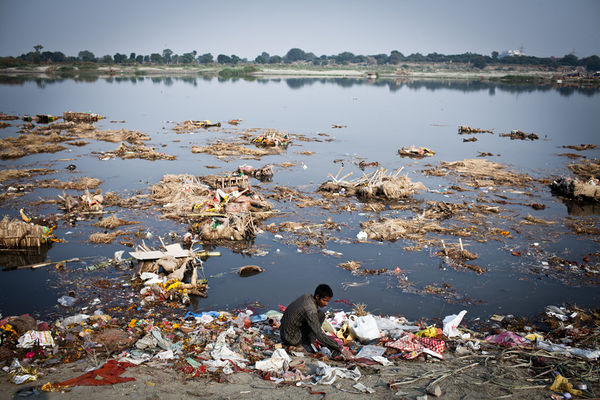
By Santiago Acero
Contaminated Water
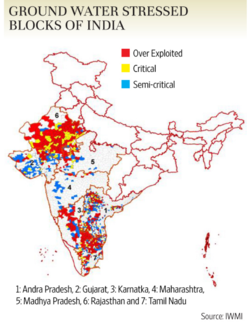
Ground Water

It is estimated that cities in India produce around 40,000 million daily liters of household biological sewage; alarmingly, only about 20% of this waste is treated (2,3). Figure 2 provides a visual representation of sewage production and treatment capacity. Excreta Does Matter (2013) a study by the Centre for Science and Environment (CSE) says that "[t]he untreated waste dumped into rivers seeps into groundwater, thereby creating a ticking health bomb in India," which is overly problematic because the same study reports that 48% of India’s populous lives off groundwater. Groundwater has become a main source of water for a large percentage of Indians because of its ease of access, lack of regulations, and its preferred reliability over stagnant surface water (4).
Another problem associated with tapping into this resource involves India’s large, and growing population. In the past four decades, India’s population has doubled to 1.2 billion and over 30 million water wells and pumps have been built. With over 600 million people in India living off of groundwater, the resource is becoming scarce and harder for farmers and others to acquire. Many areas are beginning to become increasingly stressed as seen in figure on the left. Normally, groundwater is obtained by tapping 10 meters into the ground. However, with the immense demand for groundwater, farmers and others are being forced to tap 60 meters into the ground. Past 10 meters, they must utilize deep-water equipment, which is a costly and arduous process. The majority of this water is in demand for irrigation. As India’s water sources become polluted, the farmers have been a group to particularly struggle. Along with a lack of accessible groundwater, animals that normally inhabited the marsh lands surrounding the rivers, are leaving those areas due to the mass pollution of the rivers and coming to farmers’ fields, destroying their crops, an Indian farmer told the New York Times in a piece released in 2013. It is evident the impact that water contamination is having on groundwater in India, which is the main source of water to almost half the country. But where does the pollution come from?
Sewage Complications
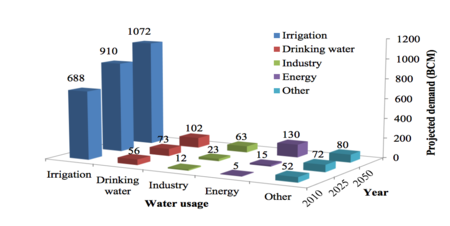
In India, 80% of sewage is disposed directly into the country’s rivers, reported the CSE in an early study in 2013. Apart from sewage, cremated bodies are also disposed of in these rivers, as many are seen as holy symbols in the Hindu religion. The large amount of untreated waste is attributed to the lack of functional treatment plants in India as a whole. The World Health Organization reported that of India’s 3,119 towns and cities, 6.7% have partial sewage treatment, while only 0.25% have full sewage treatment (7). The problem not only lies in the fact that there are not enough facilities to treat sewage, but also in the fact that existing ones are primarily useless due to their lack of functionality by construction and upkeep. As well, a lack of workforce coupled with minimal management and lacking constant electricity, renders these treatment plants helpless (3).
In India, there are more temples than toilets (17). Left without any sort of latrine, many are forced into open defecation, contaminating surface water and resulting in critical health issues due to the lack of hygiene associated with these areas where open defecation is prominent. When people defecate in open fields, their feces are almost immediately surrounded with flies, which can then become carriers of feces spreading disease to food and water. The feces in open fields can also make its way into streams and runoffs, further contaminating nutrition sources (13). Interestingly, studies have shown that even when toilets are available, people in rural India will still practice open defecation, seemingly adapting a cultural and behavioral aspect. The contaminated water that remains is used for everyday washing, bathing, and drinking. The consumption of this water is in many cases fatal. Population Resource Center found in a study in 2004 that contaminated water and food are the cause of 2.2 million deaths of children and infants, almost half happening in India in children under the age of 5. Children are the most vulnerable when it comes to the waterborne illnesses found in contaminated water.
Waterborne Illness
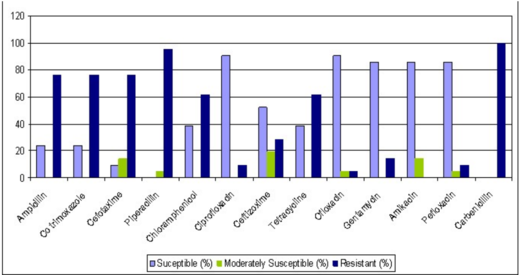
The majority of deaths associated with contaminated water and poor hygiene world wide, are those diseases that cause severe diarrhea. These include diseases such as cholera and dysentery. World wide, diarrhea is the number two killer of children under the age of five, killing 1 in 9. Diarrhea causes dehydration due to the extreme loss of fluids in the body, which in turn can cause kidney failure and other harmful side effects. In children under five, being dehydrated for two days can be fatal, where in adults, it is the regular duration of a normal, non-threatening diarrheal episode. The diseases are so easily spread in children because of a lack of hygienic education and their adventurous nature, all in an environment where sewage goes directly into drinking water sources and open defecation is nation wide. Some of the most worrisome bacteria in India’s contaminated waters are Klebsiella, responsible for a myriad of diseases such as rhinoscleroma, atrophic rhinitis, sinusitis, otitis, appendicitis, enteritis, and cholerysititis, and Acinetobacter responsible for diseases such as bacteremia, pneumonia, meningitis, wound infections, endocardtitis, and otitis media. Like many bacteria, Klebsiella and Acinetobacter have become growingly difficult to treat due to their adaptive resistance to antibiotics. Like many diseases in developing nations, when treatment cannot be fully overseen, bacteria may be exposed to antibiotics for a period of time that allows the bacteria to adapt to the antibiotics without eradication from patient, with treatments not being carried to term. The reason for incomplete treatment ranges from the cost of these drugs to patients seeing decrease in symptoms and consequentially stopping their treatment. This has led to the evolution of many nosocomial strains of these bacteria leading to high rates of mortality and morbidity in India as well as in the United States (11). Treatment will also vary by patient and by what type of strain is identified. In patients that are allergic to penicillins, aztreonam and quinolones have been effective and when treating rhinoscleroma, rifampin has proved useful. Though more regularly, Klebsiella infections are treated with monotherapy of cephalosporins and sometimes in concert with aminoglycosides (14).
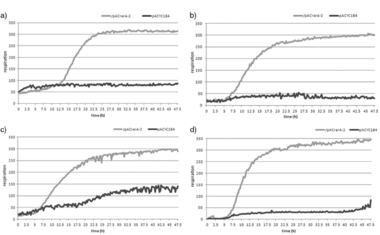
MDR Klebsiella operon
Though antibiotics have saved millions of lives world wide, their misuse has proven fatal: creating bacteria resistant to any tool available in the medical field. Dr. Vinod Paul, the head of pediatrics at the All India Institute of Medical Sciences, explains that, “with antibiotic pressure, then these organisms [Klebsiella and Acinetobacter] become resistant” (17). Figure 5 shows a wide range of nosocomial Klebsiella strains susceptibility to different antibiotics. On a molecular level, it has been found that there is a multidrug resistance operon in Klebsiella similar to the MarA, SoxS, Rob, and RamA that contribute to antibiotic resistance in bacteria like Escherichia coli and Salmonella. The overexpression of this RarA protein in Klebsiella has been found to change the expression of over 60 genes, much like MarA, SoxS, Rob, and RamA. Though these proteins and their respective operons are well understood in bacteria like E.coli, the rar operon in Klebsiella is not. The most important changes in expression known to contribute to multiantibiotic resistance in Klebsiella are the downregulations of OmpF porins, an outer membrane porin that allows diffusion of small polar molecules, and the upregulation of AcrAB and OqxAB efflux pumps that allow the bacteria to quickly get rid of any antibiotics that may pass through their membranes. In addition to change in expression of genes associated with antibiotic resistance, genes associated with energy production along with other energy intensive genes were downregulated. Interestingly, overexpression of the rarA gene showed increased anitbiotic resistance to different types of antibiotics. This is where bacteria like Klebsiella become dangerous: when already harmful bacteria have the ability to mutate and acquire resistance to different types of antibiotics, they become fatal. The overexpression of the rarA gene in Klebsiella, for example, resulted in increased resistance to multiple types of antibiotics including disinfectants, beta-lactams, protein sysnthesis inhibitors, cytokineis inhibitors, antifungal/antiprotozoals and others as seen in Figure 6. Further research into the genes who’s expressions are affected by the over expression of RarA have great clinical implication since isolates of Klebsiella have been associated with higher transcription of RarA (12).
Population

India is the second most populated country in the world, making up about 17% of the earth's population. As the population continues to escalate dramatically, resources continue to decline in the same fashion, not only in quantity but in quality as well. Over 350 million live on less than a dollar per day (15). That is 40 million more than the entire United States population. Contraception is expensive and taboo to many. This rampant growth only furthers the disease pool in India, as more and more people are crowded into increasingly smaller spaces, where sewage is little to none. This facilitates the spread of diseases acquired from contaminated water. The rapid growth in population also further escalates the countries constant struggle with poverty. Resources are already not sufficient for the large population at hand, but when an exponential amount of people are being born, there is more to care for and less financial support to do so. Local and national constitutions struggle to find sufficient funding, though there has been a radical increase in awareness and allocation of funds in the 2000’s. In the 1980’s the coverage of rural sanitation was at 1%, growing to 21% in 2008 (16). Awareness and education in India are large contributors to the problem behind the water contamination endemic. India’s literacy rate is around 74%, this seems good, but when taking into consideration the population, that means that there around 300 million illiterates in India. Education about hygiene would be hard enough in a country with 1.3 billion, but when a large portion of those is illiterate, it becomes harder to convey the message. It is hard to penetrate social and cultural taboos, especially in a country where there are 19 major languages with a 100 different dialects and many cannot read or write (15).
What is Being Done

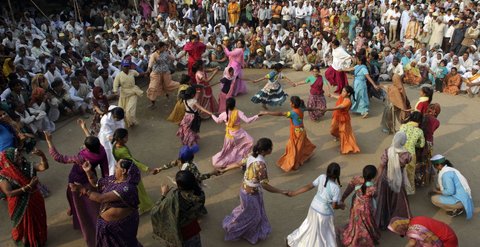
There have been many campaigns, local and national to improve the sanitation in India and stop the wide spread mortality associated with it. From government movements such as new Prime Minister Narendra Modi’s “Clean India” plan, which wants to make New Dheli a clean, trash free city. For example, Modi has worked with large companies to build and supply more people with toilets. Last year, Modi’s government was able to produce over 5.6 million toilets, though many went unused. Locally, many Indian’s have take to the streets to protest about the pollution in their holy rivers and lack of sewage in their cities. The Yamuna River is one of the most protested rivers due to its holy status and its insurmountable levels of contamination. The government has pledged time and time again that the river will be cleaned, providing it with x amount of clean water and adding sewage treatment systems; though to this point no true progress has been made, under Modi’s rule many are hopeful.
As well, there have been organizations world wide attempting to come up with solutions to India’s water crisis. Researchers from Carnegie Mellon have partnered up with a company to make the first Drinkable Book. A truly remarkable innovation, the drinkable book is composed of pages which each break into two filters, that can provide someone with clean water for 30 days. Printed on the pages are tips on sanitation that we take for granted and might even break social stigmas in India. The book aims to not only provide people with clean water but also educate them at the same time. Perhaps the most problematic aspect of India’s crisis are the cultural and behavioral stigmas associated with many of the “problems” and “solutions”. Sadly, many of the judgment calls all over India are made by the men in the households, who do not seen sanitation as overtly troublesome topic (18).
In the fight to provide toilets for households in India, many have gone unused. The men in the family fear that the large concentration of fecal matter so close to their homes is not as healthy as relieving themselves in open fields with breezes. As well, they fear the pits, where the fecal matter would go, would fill up quickly and they would have to be the ones to clean out these pits of feces. The social status associated with latrine cleaners is not a good one. The fear of descend in social status also prevents families from moving forward with the concept of toilets. However, it is true that many women have adapted the use by means of governmental propagandas encouraging families to not allow the women in their families to marry into a village that does not utilize toilets, because it is not safe for women to defecate in open fields, especially late at night in places where public lighting is close to non-existent. Because of this, the image of toilets has become attractive, but only for women (19). One approach officials have taken is to pay people to use public toilets. Specifically, officials are rewarding good behavior in children, giving them a rupee every time they use the public restrooms and sometimes-even chocolates. The problem is that many of these people have grown up in small, sheltered villages and taking an action as public as defecation, to them, and making it as private as we know it to be, is an utter culture shock. Many believe there are witches in the public bathrooms or that their children will be kidnapped in them (13). Lack of trust in innovation will always be a struggle in developing countries.
Conclusion
The advancements made thus far are admirable, but far from sufficient. It should be a nationwide concern just as much as an international one. Allowing hundreds of millions of people to go without potable water is inhumane, as is allowing the corruptive pollution of our planets bodies of water. It is clear that awareness is being raised, and more people are starting to listen and join the cause. Potable water is a worldwide issue. It may seem hard to relate to the hardships of India’s water crisis, but the struggle is taking place, in a different form, here in the United States. Though the quality of water is incomparable, the quantity is not. California has such severe droughts that state government officials have implemented mandates conserving the amount of water used. The entire state of California is under some sort of drought distress, some areas more than others. Thankfully, the droughts in California have not escalated to fatal extents. However, seeing a domestic struggle with potable water availability gives as a small, but significant glimpse into the shameful conditions in countries such as India. It is important to recognize the problems that plague us as a race see no geographical boundary. Research inches closer to answers and solutions, but it is only through awareness and education that this is possible.
References
Links:
1. http://water.usgs.gov/edu/earthhowmuch.html
2. http://www.huffingtonpost.com/2013/03/05/india-river-pollution-sewage_n_2810213.html
3. http://www.cseindia.org/userfiles/aagd2013_report.pdf
4. http://www.livemint.com/Opinion/v4nXpXNxSJtxQNlEbvtJFL/Indias-groundwater-crisis.html
5.http://www.ais.unwater.org/ais/pluginfile.php/356/mod_page/content/111/CountryReport_India.pdf
6. http://india.blogs.nytimes.com/2013/03/15/government-pledges-to-clean-up-yamuna-river-again/?_r=0
7. https://en.wikipedia.org/wiki/Water_pollution_in_India
8. http://www.cpcb.nic.in/upload/NewItems/NewItem_99_NewItem_99_5.pdf
9. http://water.org/country/india/
10. http://www.livescience.com/1853-pollution-40-percent-global-deaths.html
11. http://www.ncbi.nlm.nih.gov/pmc/articles/PMC263290/pdf/iai00124-0147.pdf
12. http://www.ncbi.nlm.nih.gov/pmc/articles/PMC3623357/pdf/zac1603.pdf
13. http://www.bbc.com/news/health-33980904
14. http://emedicine.medscape.com/article/219907-medication
15. http://www.overpopulation.org/India.html
16.https://en.wikipedia.org/wiki/Water_supply_and_sanitation_in_India#cite_note-health_11thplan-8
17. https://www.youtube.com/watch?v=DOBjADBu6GA
18. https://www.youtube.com/watch?v=qYTif9F188E
Huff Post: http://www.huffingtonpost.com/2013/03/05/india-river-pollution-sewage_n_2810213.html
Times Live: http://www.timeslive.co.za/scitech/2013/03/05/eighty-percent-of-untreated-indian-sewage-landing-in-rivers
New York Times: http://india.blogs.nytimes.com/2013/03/15/government-pledges-to-clean-up-yamuna-river-again/
Ganges Wiki: https://en.wikipedia.org/wiki/Ganges
CSE Excreta: http://www.cseindia.org/userfiles/aagd2013_report.pdf
Authored for BIOL 291.00 Health Service and Biomedical Analysis, taught by Joan Slonczewski, 2016, Kenyon College.
